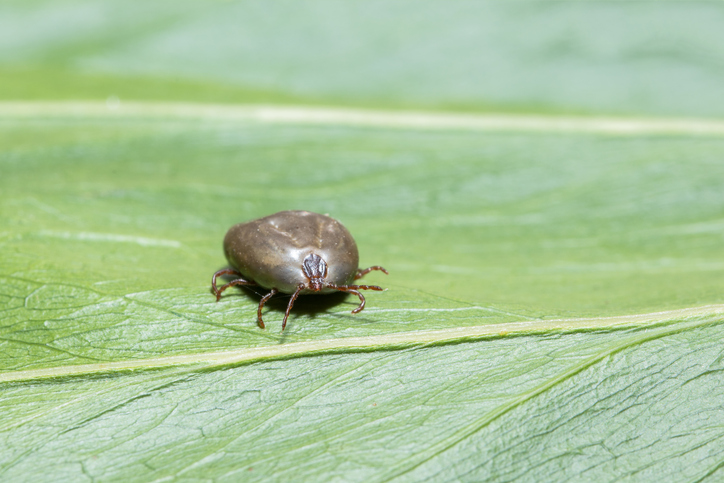Congenital and Inherited Multifocal Disorders of the Nervous System
- Congenital and Inherited Anomalies of the Nervous System
- Overview of Congenital and Inherited Anomalies of the Nervous System
- Congenital and Inherited Cerebral Disorders
- Congenital and Inherited Cerebellar Disorders
- Congenital and Inherited Brain Stem Disorders
- Congenital and Inherited Spinal Cord Disorders
- Neuromuscular Disorders
- Congenital and Inherited Multifocal Disorders of the Nervous System
- Miscellaneous Congenital Disorders of the Nervous System
Large Animals
Hereditary neuraxial edema with inherited congenital myoclonus (probable autosomal recessive) was first reported in neonatal Polled Herefords and is the result of decreased and/or defective glycine receptors, which provide inhibitory neurotransmission. The calves are alert but unable to rise; they are incoordinated and have coarse, tonic muscular contractions. Sudden stimuli cause vigorous extension of the legs and neck.
Shaker calf syndrome is a neurodegenerative disorder that is seen in Hereford calves. Affected animals show a marked tremor within hours of birth, difficulty in rising, a stiff gait, and loss of voice; signs progress to spastic paraplegia. There is excessive accumulation of neurofilaments within neurons of the central, peripheral, and autonomic nervous systems.
Vitamin A deficiency of sows can cause incoordination, head tilt, pelvic limb paralysis, paddling, and ocular lesions in piglets. Similar signs are seen in congenitally affected calves born from deficient dams.
Generalized Metabolic and Lysosomal Storage Disorders:
Maple syrup urine disease is a genetic amino aciduria (consistent with a branched-chain ketoacid decarboxylase deficiency) in Hereford calves. Affected calves are dull, become recumbent in 2–4 days, and terminally have opisthotonos. The histologic lesions are severe and consist of generalized status spongiosus in the CNS.
GM1gangliosidosis is seen in inbred Friesian calves. Clinical signs become evident during the first week of life and include depression, swaying of the hindquarters, reluctance to move, and stiffness. Death occurs in 6–8 mo.
GM2gangliosidosis causes hypermetria and weakness in Yorkshire piglets within the first 3 mo of life. Death occurs in 4–6 mo.
α-Mannosidosis (autosomal recessive) is seen in Angus, Murray Grey, and Galloway breeds. It produces ataxia, head tremor, aggression, and failure to thrive. There may also be abortions and neonatal death. Most affected calves die within the first year, sometimes shortly after birth. Affected (homozygous) calves have an absolute deficiency of α-mannosidase, and heterozygotes are partially deficient. Mannosidosis can be controlled by identifying and eliminating heterozygotes on the basis of biochemical testing.
β-Mannosidosis causes recumbency and cerebellar signs in newborn Nubian goats and Salers calves.
Ceroid lipofuscinosis is seen in sheep, cattle, and goats. Young Nubian goats show cerebellar signs. Rambouillet sheep show blindness and decreased mentation from 8 mo of age. South Hampshire lambs 9–12 mo old show blindness, depression, head and thoracic limb tremor, and facial twitching and die by 30 mo of age. Devon cattle become blind and weak by 14 mo and die by 4 yr of age. The genetic mutation has been identified in some of these species (Devon cattle, South Hampshire sheep).
Globoid cell leukodystrophy has been reported in polled Dorset sheep 4–18 mo old. Exaggerated tendon reflexes, ascending paralysis, and cerebellar signs may be seen.
Small Animals
Multisystemic chromatolytic neuronal degeneration in Cairn Terriers causes paraparesis in young puppies that progresses rapidly to produce cerebellar involvement with bouts of cataplectic collapse. Degeneration of neurons is widespread in the brain, spinal cord, and sensory ganglia.
Multisystemic neuronal degeneration has also been reported in red-haired Cocker Spaniels and causes abnormal behavior and cerebellar signs. Neuronal changes are found in various brain-stem nuclei. A similar condition is seen in Miniature Poodles (3–4 wk) with signs characterized by rolling from side to side, inability to stand or right into sternal position, periodic opisthotonos, intention tremors, and lack of a menace response associated with neuronal degeneration in the cerebral cortex and cerebellum.
Hydrocephalus in Bull Mastiffs is an inherited disorder that is also associated with abnormal myelin. It results in blindness, abnormal behavior, and cerebellar signs. Bilaterally symmetric spongiform lesions are found in the deep cerebellar nuclei.
Dalmatian leukodystrophy is a rare inherited condition that causes visual deficits with progressive ataxia and tetraparesis at 3–6 mo of age. There is dilatation of ventricles, cavitation of cerebral white matter, and widespread loss of myelin.
Fibrinoid leukodystrophy has been described in two 8-mo-old Labrador Retrievers, a 9-mo-old male Scottish Terrier, a 6-mo-old female Miniature Poodle, and a 13-wk-old Bernese Mountain Dog. It results in progressive ataxia and tetraparesis with personality changes starting at 6 mo of age. Rosenthal fibers are found around blood vessels of the CNS, and the cause seems to be a disorder of astrocyte function. Prognosis is poor.
Spongiform degenerative conditions have been described in young dogs and cats (breeds include Labrador Retriever, Shetland Sheepdog, Samoyed, Silky Terrier, Bull Mastiff, Saluki, Cocker Spaniel, Malinois-Shepherd crosses, Rottweiler, and Egyptian Mau and Burmese kittens) and are often associated with signs of ataxia/hypermetria, head tremors, intermittent contractures, postural abnormalities, and behavioral changes. The underlying pathology relates to spongy degeneration of either white or gray matter. The pathogenesis of these disorders remains uncertain, although a genetic mutation has been identified for a family of Australian Cattle Dogs and Shetland Sheepdogs. Prognosis is poor.
Hereditary quadriplegia and amblyopia in Irish Setters produces signs of head tremor, visual impairment, nystagmus, inability to stand, and seizures beginning at birth.
Lysosomal Storage Disorders:
This clinically rare group of conditions results from deficiency of an enzyme that is essential for the metabolism of a protein, carbohydrate, or lipid substrate, or results from buildup of a byproduct that can be toxic to cells. Clinical signs usually appear early in life, although occasionally the onset is delayed. Specific diseases have been associated with a particular breed, but in theory, any breed could develop any one of these disorders, and many have been described in more than one breed. Considerable phenotypic variation should be expected beyond the classic signs described below. Prognosis is poor for all of these disorders, although gene replacement therapies are being actively investigated. Diagnostic testing is limited except for those diseases in which the enzyme or mutation has been identified or the pattern or organic acids has been recognized. Testing often includes urine metabolic screening, lysosomal enzyme screening, histopathology for specific characteristics in tissue biopsy, or DNA testing for known mutations. Genetics laboratories should be checked for testing availability.
Sphingolipidoses:
Globoid cell leukodystrophy (Krabbe disease) is seen mainly in Cairn and West Highland White Terriers. Several other breeds of dogs, as well as cats, may be affected. Clinical signs are variable and multifocal, and either an ascending paralysis is seen by itself or combined with a cerebellar disturbance. Death occurs 2–3 mo after the onset of signs. Total protein content of CSF may be increased. Large globoid cells are distributed throughout the white matter of the spinal cord and brain.
GM1gangliosidosis is seen primarily in cats, particularly Oriental breeds, and in Beagles, Portuguese Water Dogs, English Springer Spaniels, Alaskan Huskies, and Shibas. Signs of cerebellar dysfunction predominate, and corneal clouding may develop.
GM2gangliosidosis or familial amaurotic idiocy (Derry disease) has been seen in German Shorthaired Pointers, Japanese Pointers, mixed-breed cats, and Korat cats. Clinical signs seen at 6 mo of age include behavioral change and visual disturbances. Progressive ataxia and dementia develop later. Clinical signs of ataxia, hypermetria, head tremor, and corneal opacity develop in kittens at ~3 mo of age.
Niemann-Pick disease affects cats and causes cerebellar dysfunction with an associated abdominal enlargement due to hepatosplenomegaly. The neurologic deficits tend to vary with the six subtypes of this disease, ranging from severe cerebellar-like signs (types A and C) to neuropathic signs (type A variant).
Glucocerebrosidosis (Gaucher disease) is a rare disorder of Australian Silky Terriers that produces mainly cerebellar signs at 4–6 mo of age.
Glycoproteinoses:
Fucosidosis of English Springer Spaniels has been reported in Australia, New Zealand, the UK, and North America. It is characterized by clinical signs of ataxia, personality change, dysphonia, dysphagia, hearing/visual deficits, and seizures. Signs tend to progressively develop from 6 to >24 mo of age. A high proportion of peripheral lymphocytes may show cytoplasmic vacuolation. A DNA-based blood test is available for diagnosis. Prognosis is poor, and there is no effective treatment.
α-Mannosidosis has been seen mainly in cats and may cause retinal and skeletal abnormalities as well as neurologic deficits. Cerebellar signs are the most consistent feature of the otherwise somewhat variable neurologic deficits.
Mucopolysaccharidoses (Types I, II, III, VI, VII):
Mucopolysaccharidosis is primarily a disorder of cats, although some subtypes affect dogs. This disorder is associated with a flattening of the face, corneal clouding, and multiple bone dysplasias. Plott hounds can also be affected. Several types of this disease are reported; type VI is often associated with progressive paraparesis secondary to focal bony protrusions into the vertebral canal. The skeletal changes are nonprogressive after 9 mo of age, and decompressive surgery may improve the neurologic deficits.
Glycogen Storage Disorders:
Glycogenosis (types II, III, IV, VII) and mucolipidosis II are not as well described. English Springer Spaniels, Lapland dogs, German Shepherds, Akitas, and Norweigan Forest cats are among those described. Clinical signs generally include neuromuscular weakness, exercise intolerance, muscle tremors, or dysphagia.
Mucolipidosis II affects domestic shorthaired cats and generally causes skeletal malformations.
Other Storage Disorders:
Ceroid lipofuscinosis is characterized by reduced vision, personality change, ataxia, and seizures. Clinical signs typically appear when animals are 12–24 mo old, although some can be older. The condition is an autosomal recessive trait in English Setters, Tibetan Terriers, and Border Collies. It has been reported in many additional breeds of dogs, as well as in Siamese cats. The genetic mutation has been identified in some breeds of dogs. The phenotype and age of onset are variable, and signs tend to slowly evolve throughout several years.
La Fora disease occurs most commonly in miniature Wirehaired Dachshunds but also can affect other breeds, such as Bassett Hounds, Beagles, Poodles, and mixed-breed dogs. It is most well known and genetically understood in the miniature Wirehaired Dachshund, and a genetic test is available for diagnosis in this breed. Clinical signs can include late-in-life onset myoclonic seizures that can in some cases be triggered by visual or auditory stimuli. Other clinical examination findings are not commonly reported.
- Congenital and Inherited Anomalies of the Nervous System
- Overview of Congenital and Inherited Anomalies of the Nervous System
- Congenital and Inherited Cerebral Disorders
- Congenital and Inherited Cerebellar Disorders
- Congenital and Inherited Brain Stem Disorders
- Congenital and Inherited Spinal Cord Disorders
- Neuromuscular Disorders
- Congenital and Inherited Multifocal Disorders of the Nervous System
- Miscellaneous Congenital Disorders of the Nervous System





